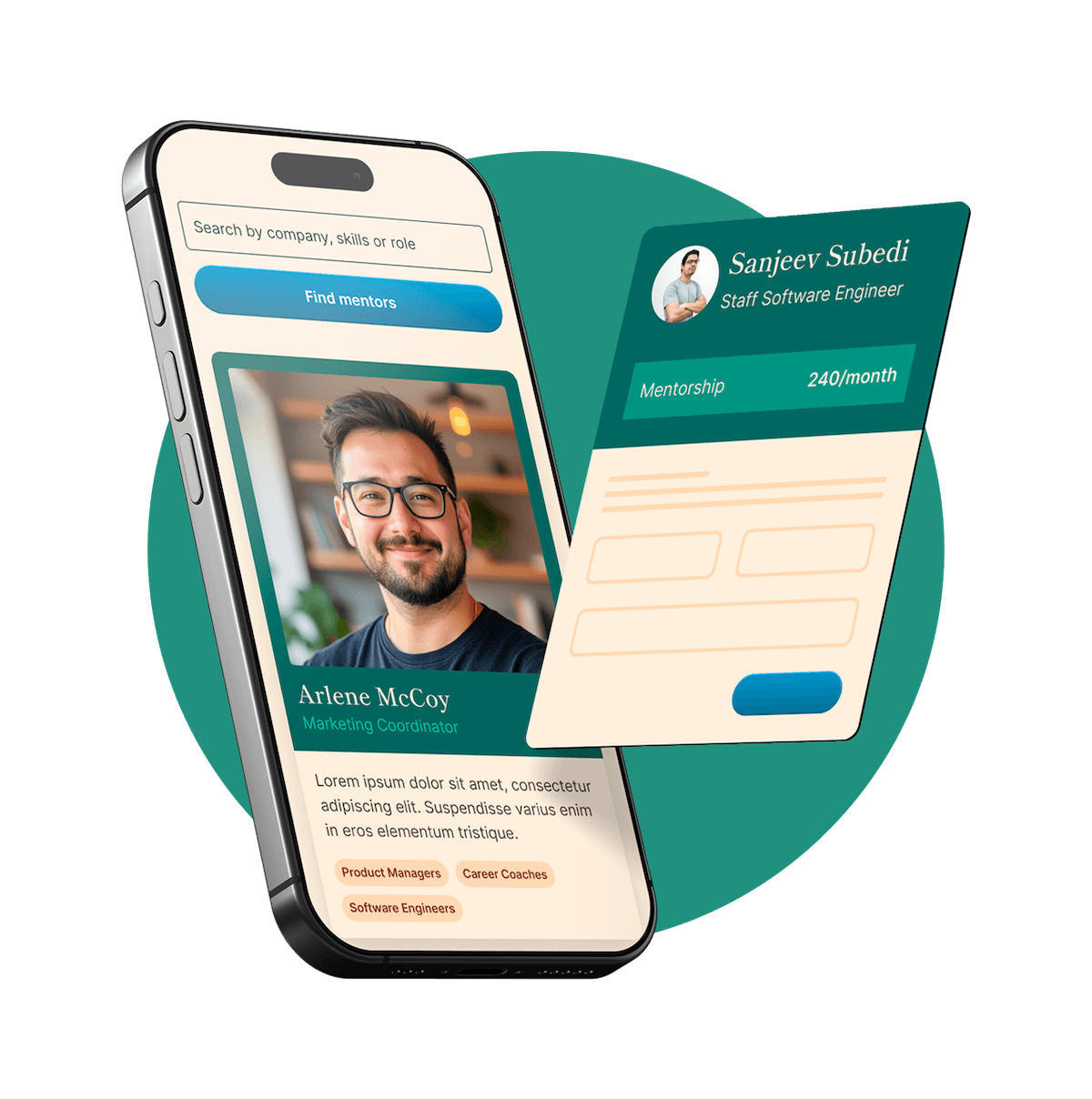Have you ever wondered why some sales and marketing campaigns fall flat while others strike a chord with their target audience? It all comes down to one important factor: empathy.
That's right. Empathy is the new data in sales and marketing. Today, customers expect more than just a product or service — they want to feel understood and valued by the companies they do business with.
But can data and empathy coexist? They sure can, but with different roles. Data is the supporting character in your sales strategy. Empathy is the leading character.
In this blog, we'll explore why empathy marketing boosts sales figures and how you can incorporate it into your existing strategies.
So sit back, grab a cup of tea, and let's dive into the world of empathy marketing.
Sales and marketing are about people — not products.
Empathy-based marketing entails viewing the world through the eyes of your customers. To be customer-centric, marketers must first understand their consumers, their issues, and what motivates them to act.
Whether you're working in a hybrid workplace or fully remote, you must learn to think like your customers and walk the steps they'll take to decide what improves their lives.
After you understand what motivates them, you can give them what they want or need to solve a real problem they're facing.
Provide them with content like short videos with the help of, or educational resources that directly address and clarify their problems.
When creating this content, you might need to adapt complex industry jargon into language your customers understand.
This is where a paraphrasing tool can help you rephrase technical information into more accessible, empathetic messaging that resonates with your audience. A good example is using a chatbot in WhatsApp to provide instant, empathetic responses that make customers feel heard in real time.
Here's an example from HubSpot. They create educational videos to help improve a marketer's biggest challenge: generating high-quality leads.
The result? They're helping solve one of their customers' biggest pain points through educational content.
You can’t create a great customer experience without empathy.
Think back to what you learned about empathy in elementary school. It's all about putting yourself in someone else's shoes.
And that's exactly what you want to do to provide the best possible customer experience. Sometimes, teams also use customer experience consulting to understand how empathy can be applied in practice.
By putting yourself in someone else's shoes and understanding their needs and wants, you can create personalized experiences that build trust and credibility. This is especially crucial during the customer onboarding phase, where first impressions significantly influence long-term satisfaction and retention.
So, the next time you talk to a customer, empathize with their concerns, and see how it can make a difference in your sales and marketing efforts.
For example, let's say you're a salesperson for a software company. You're talking to a potential customer, but they're concerned about its complexity.
Instead of simply trying to sell them on the product, you could empathize with their concerns. Maybe they've had a bad experience with complicated software or are worried about their team's ability to use it.
You could offer a demo or trial period to help them get comfortable with the software, or provide additional training and support to ensure their team is successful, like Wordable.
Empathy helps teams understand what motivates buyers and gain their trust.
Empathy isn't just a feel-good concept. It's a powerful tool that helps sales and marketing teams understand what motivates buyers and gain their trust.
When you empathize with your customers, you can understand their pain points and priorities. You can determine what keeps them up at night and what they want in a product or service.
Understanding these motivations allows you to tailor your approach and messaging to resonate with them.
For example, let's say you're promoting a fitness program. You might assume your audience is focused on weight loss or muscle tone.
But by practicing empathy, you could uncover that many are new moms looking for a supportive way to reconnect with their bodies. Highlighting something like a postpartum workout plan allows you to address those deeper motivations and build genuine trust.
Take Form Health, for example. They use empathy-driven messaging to connect with individuals seeking support with medical weight loss. Instead of focusing solely on the number on the scale, their approach acknowledges the emotional and psychological challenges behind weight management.
Treatments like Wegovy for weight loss emphasize real-life benefits — like improving energy, feeling more in control, and regaining confidence — not just shedding pounds. It’s messaging that makes people feel seen and supported, not sold to.
Personalized marketing is more memorable to customers.
Studies show that 90% of consumers in the United States find personalized marketing content appealing.
Why? It humanizes your business. They want to put a face behind your brand. And with so many options today, you need all the help you can get to stand out.
Netflix is known for its personalized email marketing campaigns, offering new movie and TV show suggestions based on watch history.
Instead of searching through thousands of options on other streaming platforms, customers will remember these customized emails and leverage them to find the next show to binge on.
Empathy shows that you listen to your customers and understand their pain points.
Customers want to work with companies that understand their needs and can offer solutions that solve their pain points.
Why? We're busy people and want the best possible solution on a silver platter without dealing with the hassle of a sales pitch (or the dreaded car salesperson). And we don't want to be sold something we don't need.
One great example of empathy marketing is in the vacation industry. Brands tweak their content, catering to the needs and desires of the target audience and appealing to their FOMO (fear of missing out) — a feeling we all have had.
For instance, this page displays various events in Tulum, Mexico, such as yoga retreats, music festivals, and adventure experiences.
Check how they classify some events as "private events/parties." This, of course, has the double intention of informing the reader and appealing to regular vacationists' emotions.
That subtle tag comes from understanding the target audience and their life context.
Empathy makes you more relatable.
Empathy can also help you become more relatable by showing that you're a human being, not just a salesperson or marketer.
When you're able to connect with your customers on a human level, it helps build a genuine relationship of trust and authenticity.
Let's imagine, for example, a customer service representative working at a residential treatment center for teens with mental health issues and having to discuss service payments. It’s normal to deal with families who feel frustrated or worried when they reach out with a problem.
If the customer representative can put themselves in the family's shoes, they can understand their perspective through active listening, acknowledging their frustrations, and expressing genuine concern for the issue.
By doing so, the customer feels heard, understood, and appreciated. They're more likely to view the representative as someone on the same team rather than just a robot trying to make a sale.
With empathy, you’re seen as a partner — not a vendor.
Similarly, when you can understand their needs and show that you care, you create a connection beyond the transaction.
You become a partner in their journey rather than just a vendor. Take Chewy, for example. They go above and beyond to ensure their clients and furry friends are well cared for, regardless of the situation.
Empathy builds trust and authenticity.
Relationships are all about trust. That includes customer relationships. Personal relationships. And even friendships.
When you take the time to genuinely understand how a person is feeling, it shows that you care. And when you care about something, it's an instant trust booster.
When a brand shows empathy toward its customers, it communicates a genuine concern for their needs, emotions, and experiences. This creates a deeper connection between your brand and your audience.
Now, you're more than just a faceless corporation, but a group of people who care about their customers. And customers can sense when a brand is sincere and when it's simply going through the motions.
Bringing in a proactive approach will help you stand out.
Instead of waiting for problems to arise and then reacting, try anticipating potential issues and preventing them from happening.
This approach improves efficiency and minimizes risk, and shows that your brand is a go-getter with foresight and initiative.
Demonstrate your commitment to taking ownership and responsibility for achieving your goals and your willingness to invest the time and effort to make things happen.
Why? Customers are always looking for innovative solutions and proactive service.
Being proactive in the workforce lands you a promotion. The same holds true with being a proactive brand.
You can set yourself apart from competitors and establish a reputation as a reliable and forward-thinking partner. You can even use it to grow your Instagram account.
However, if you’ve a new account, you might need to boost your Insta followers to start getting organic traction with your content.
Look at how Ulta Beauty shares a post about how customers can transition from winter to spring, even when spring is still months away. In the future, customers will turn to Ulta Beauty for the latest beauty trends.
The result? Ulta Beauty has amassed over 7 million followers on Instagram.
7 Tips for Making Marketing and Sales More Empathetic
Now that we've covered the basics, let's dive into the meat and potatoes of empathy marketing.
Here are seven simple tips to improve your marketing and sales strategies with empathy.
1. Understand your buyer’s journey
What do Target and HubSpot have in common? They focus on the buyer's journey to build trust and convert more sales.
The result? They've climbed to the top and are leaders in their respective industries. So why not take a page from their book and focus on the buyer's journey?
The buyer's journey is the process that your customers go through from the moment they become aware of your product or service to the point of making a purchase.
By taking the time to understand the different stages of the buyer's journey, you can create content and messaging that resonates with your audience at each stage.
Here are some examples of how you can apply empathy during each stage of the buyer's journey:
Let’s say your product is a restaurant POS system. During the awareness stage, you might create a blog titled ‘Top 5 Signs Your Restaurant Needs a POS Upgrade.’ In the consideration phase, offer a comparison between different POS systems tailored to restaurant types. And in the decision stage, highlight case studies of restaurants that improved operations using your software.
Awareness:
- Create blog posts or videos that address common questions or concerns your potential customers have.
- Share stories or testimonials from current customers who have experienced similar issues.
- Offer a free resource (such as an ebook or checklist) that helps them identify the problem and provides some initial guidance.
Consideration:
- Offer a comparison guide that outlines the pros and cons of different solutions.
- Provide product demos or case studies that show how your product or service has helped others.
- Offer a free trial or consultation so they can experience your product or service firsthand.
Decision:
- Offer clear pricing and packaging options so they can easily understand what they are getting and at what cost.
- Provide excellent customer service that answers their questions and addresses any concerns.
- Offer a no-risk guarantee or return policy, so they feel confident in their decision.
2. Personalize as much as possible
Personalization is key to creating a meaningful connection with your audience.
Use data to segment your audience and create personalized messages about their needs and interests. This content could include personalized images and emails, targeted advertising, or custom landing pages made with an intuitive website builder.
For example, if you were to sell life insurance online, you'd need to understand what your clients are looking for in this type of service: affordable premiums, flexible coverage options, ease of application, and reliable financial protection for their families.
Then you can create personalized guides to help them choose the right life insurance plan for their needs. Take it up a notch by offering a simple online tool that provides customized quotes delivered straight to their inbox.
3. Observe what captures your attention
As a consumer, you can observe what captures your attention and use that knowledge to create marketing messages that resonate with your audience.
Pay attention to what makes you click on an ad or read a blog post. This strategy can help you identify the elements likely to capture your audience's attention.
Think of it like a science experiment. Find out what works well to capture your attention, then use that same approach for your brand.
4. Lead with a problem, not a solution
When creating marketing messages, focus on the problems that your product or service solves rather than the features or benefits.
This approach will help you connect with your audience emotionally and show them that you understand their needs.
The goal is to build trust as a thought leader by focusing on a common problem in the SEO space. Then, once the trust is earned, they can provide a subtle hint at their SEO agency as a solution to this problem. It's a win-win.
5. Get to know your audience
Take the time to get to know your audience on a deeper level.
Thankfully, it's not as complicated as it sounds. You can leverage focus groups to learn about their purchasing habits, conduct surveys for insights into their discretionary income, and analyze product feedback on social media.
The more you know about your audience, the better you can tailor your empathy marketing messages to meet their needs.
And when you understand your customers, their values, and the importance of their purchases to them, you can create deeper, more authentic connections.
For instance, knowing your customers inside and out helps you position your product or service to them based on their purchasing power.
The goal isn't to market Rolex and Louis Vuitton products on billboards in low-income areas. These billboards can come off as cold and insensitive. The same goes for selling ice to an Inuit.
6. Start by analyzing the data in front of you
Keeping your audience at the forefront of everything you do is the best way to leverage the power of empathy. Do your own research (e.g., A/B tests) and put it to good use.
And what better way to start than by analyzing the data you already have at your fingertips?
Empathy marketing works best by determining when your customers are the most ready to purchase so that you can replicate these results or improve upon them.
Rather than juggling fragmented data across platforms, using a customer data platform (CDP) can help centralize your insights and give you a 360-degree view of each customer. When combined with a lifecycle marketing strategy, this allows you to tailor messaging to where each person is in their journey — from awareness to consideration to loyalty.
By understanding these behavioral patterns and engagement signals, your team can build trust through timely, personalized interactions that feel relevant and human. This will result in better conversion rates and long-term relationships.
Here are some key advantages of implementing a lead-scoring model in your company:
- Increased conversions: Your team can identify the product-market fit by targeting potential customers when they are ready to buy, leading to a higher conversion rate.
- Shorter sales cycle: Knowing when a lead is ready to close enables your team to put less time and effort into the process, resulting in a shorter sales cycle.
- Effective lead handoff: With a clear lead handoff process, your marketing and sales teams can work together to improve lead conversion success rates.
- Identifying the best lead generation activities: By analyzing factors that led to the conversion of high-quality leads, your team can create content to attract similar customers in the future.
7. Use data to guide your plans and goals, but always use empathy as the tool to connect with your customers.
Finally, remember that empathy is not a replacement for data-driven decision-making, but rather a tool to enhance it.
Data visualization tools such as histograms and bar graphs provide a straightforward representation of data, but they fail to capture the emotional aspect of customer interactions.
By incorporating empathy into data analysis, your sales and marketing professionals can better understand the customer experience and connect with them on a deeper level.
Use data to guide your plans and goals, but always approach your audience empathetically. Analyze the data, put yourself in their shoes, and then make the final decision. You won't regret the extra step.
As the saying goes, it's better to measure twice and cut once. The same applies to empathy marketing.
Key Takeaways
If you want to improve and advance your sales and marketing strategies, taking a step back might better serve you.
Rather than relying on data and analysis as your primary criteria, try opening up and trying to evoke some empathy from your customers and prospects.
This approach is initially challenging but can work in nearly every situation where personalized data can't.
Data is certainly valuable for decision-making, but without empathy to back it up, the cold and impersonal world of big business can easily become a lonely place for everyone involved.
Are you ready to take your marketing game to the next level? Double down on empathy marketing today. You won't regret it. And neither will your bottom line.







